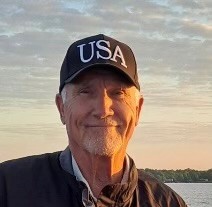Tech Took Us There
In his own words: `67 EE alum thanks Tennessee Tech for education that allowed him to be a part of Space Race to the Moon
By Bill C. Panter

I grew up in Bledsoe County, Tennessee, on a small farm that has been in our family since 1878. I went to high school at Bledsoe County High. My parents were very strong advocates for education and taught all of us kids a strong work ethic. When I was starting 6th grade, my dad decided I was big enough to start handling the day-to-day plowing of the corn and tobacco crops. We had a small tractor at the time, but he sold it and bought a horse. His rationale was that a tractor on our steep hills would roll over and hurt or kill me, but “This horse is a lot smarter than you, so just follow her and she’ll take care of you.” I didn’t agree at the time, but he was correct, and I followed that horse for many miles.
On Oct. 4, 1957, The Soviet Union launched the first-ever artificial satellite (Sputnik 1) into Earth’s orbit! At the time, the United States had minimal space activity, and this scared the dickens out of a lot of people. I can remember my dad sitting on the steps of a local country store talking with another World War II veteran: “We don’t even have guns that can shoot that high. If they start dropping bombs, there is not a thing we can do!” Sputnik had a very similar effect on the US political leaders and precipitated the “Cold War Space Race” between the US and the Soviet Union. The so-called “Cold War” refers to the very serious and scary tension between the US and the USSR (Union of Soviet Socialist Republics) that began right after WWII and existed until the USSR finally fell apart around 1991. Growing up in the ‘50s we had nuclear bombing drills at school where we would dive under our desks to try and “protect ourselves” if the Soviets launched a bombing attack.
As a result of this, President Eisenhower converted the NACA (National Advisory Committee for Aeronautics) into a new agency, NASA (National Aeronautics and Space Administration), to establish and execute an aggressive Space Program. On Sept. 12, 1962, President Kennedy announced that the United States would land a man on the moon in that decade. “Not because it’s easy, but because it’s hard!”
I graduated high school around the end of May 1964. My science teacher had coached me through several science fairs at Tennessee Tech, and I'd won enough scholarships to pay for a portion of my tuition. My class ranking qualified me for a work scholarship at state schools, so she put me in for a work scholarship to pay for the other expenses. I started at Tech two weeks after high school graduation. She signed me up for some pretty intensive courses, like a five-hour calculus course, which you had to do in six weeks, so we went two times a day, six days a week, plus mechanical drawing, which was a three-and-a-half-hour class every day Monday-Friday. The work scholarship meant the school assigned you to whatever job where they needed help; for a dollar an hour, I was assigned to janitor duty. While emptying the trash can in my drafting teacher’s office, he recognized me and asked why I was doing janitor work. I told him why and that was that, but the following week I was reassigned to be his “helper.” He was Dr. Bullock in the Civil Engineering Department, and he kept me with him until I selected electrical engineering for my major. He was really kind to me, and I’ll always remember him. He personally set me up with an advisor, Mr. Childress in the EE Department, who also supervised my work scholarship duties. Mr. Childress also managed the school’s electronic support (PA systems, scoreboards, etc.) and after a short time, he hired me to work on those systems.
My intention was to get through college in 12 straight quarters – three years – because I wanted to be part of the “Space Race to the Moon.” That's what I did. It required carrying heavy class loads. The Tennessee Tech engineering program was structured as a 15-quarter curriculum; EE’s required 224 credit hours. I had to get approval from the engineering dean almost every quarter allowing me to carry over 18 hours of class work. I often carried 20-21 hours. My grades weren't the greatest in the world, but they were good enough that I was in the engineering honor society.
I received my degree in May 1967, and reported for duty at the NASA’s Manned Spacecraft Center the following month. Starting with Apollo, I was privileged to be part of all the Human Rated Programs through the current International Space Station!
Over the years I have known and worked with people from most of the prominent engineering universities, and not once did I feel they had a better education than I did. I will admit, well maybe complain, that in some instances their degrees opened some doors that mine didn’t. However, regardless of how we got through the door when we were all in the room, I was able to compete on an equal footing. When I think back about an East Tennessee hillbilly kid getting to participate in things he didn’t even know enough to dream about, it makes me say, “WOW! Thank You, Tennessee Tech!”

